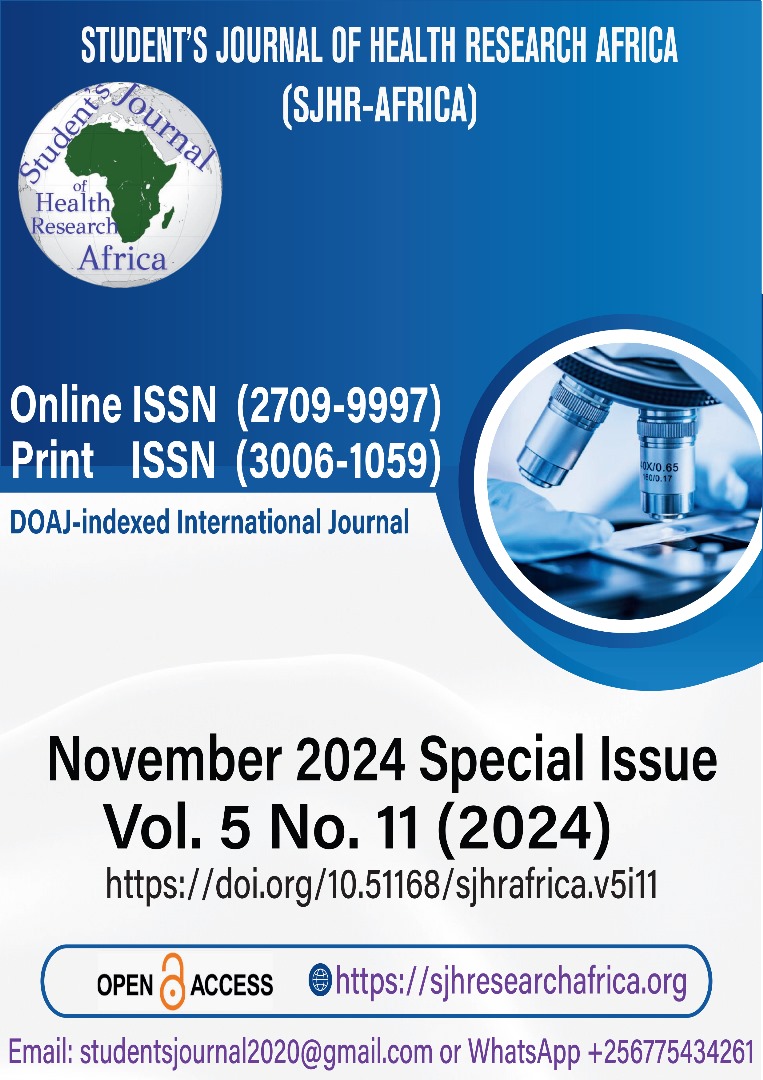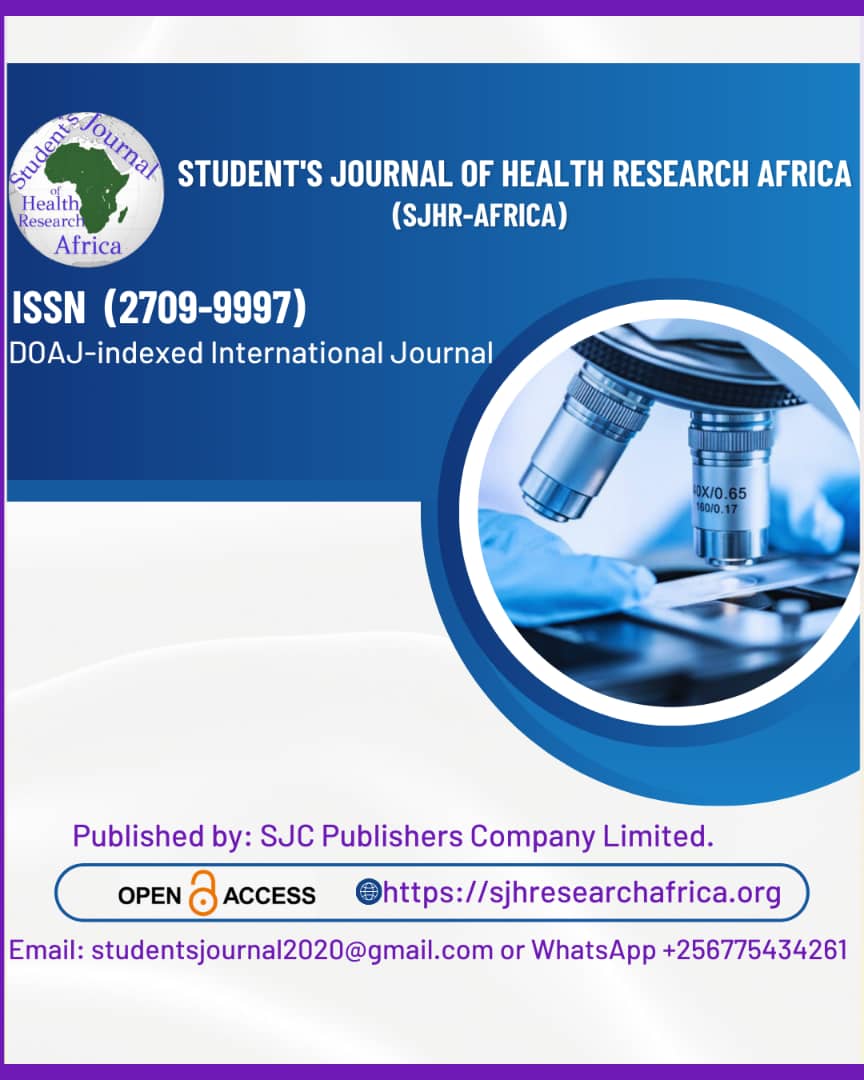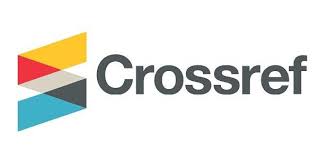Evaluating the Long-term Safety and Efficacy of Intralesional Statins versus Corticosteroids in the Treatment of Hypertrophic Scars: A Randomized Controlled Trial" Justification
DOI:
https://doi.org/10.51168/sjhrafrica.v5i11.1755Abstract
Background
Hypertrophic scars (HTS) are fibrotic dermal disorders marked by excessive collagen accumulation subsequent to dermal injury. Triamcinolone acetonide is a commonly employed corticosteroid in the management of hypertrophic scars, yet its application is linked to complications including skin atrophy and pigmentary alterations. Statins, recognized for their antifibrotic and anti-inflammatory properties, offer a potential alternative with reduced adverse effects.
Objective: This study sought to assess and contrast the long-term safety and efficacy of intralesional statins with corticosteroids (Triamcinolone acetonide) in the management of hypertrophic scars.
Methods
A randomized controlled trial was performed at the Department of Plastic Surgery, Patna Medical College and Hospital, Patna. Sixty patients aged 10 to 50 years with hypertrophic scars of less than 5 years' duration were randomized into two groups: Group A (n=30) received intralesional Triamcinolone acetonide, while Group B (n=30) received intralesional simvastatin. Injections were given at three-week intervals, totaling five sessions. Scar assessment was conducted utilizing the Vancouver Scar Scale (VSS) at baseline, 6 weeks, 3 months, 6 months, and 12 months.
Results
Both groups exhibited a statistically significant decrease in VSS scores over time (p<0.05). Group B (statin) exhibited a more expedited enhancement, especially in vascularity and pliability metrics. At 12 months, the recurrence rate in the statin group was 20%, whereas in the corticosteroid group it was 36.7%. Adverse effects were negligible in both groups, comprising transient erythema and mild discomfort at the injection site.
Conclusion
Intralesional statins seem to be a viable alternative to corticosteroids for the management of hypertrophic scars, demonstrating similar efficacy with a potentially superior safety profile. It is advisable to conduct larger studies with prolonged follow-up to corroborate these findings.
References
Mustoe TA, Cooter RD, Gold MH, et al. International clinical recommendations on scar management. Plast Reconstr Surg. 2002;110(2):560-571. https://doi.org/10.1097/00006534-200208000-00031 PMid:12142678
Manuskiatti W, Fitzpatrick RE. Treatment response of keloidal and hypertrophic sternotomy scars: comparison among intralesional corticosteroid, pulsed-dye laser, and combination treatment. Arch Dermatol. 2002;138(9):1149-1155. https://doi.org/10.1001/archderm.138.9.1149 PMid:12224975
Berman B, Flores F. The treatment of hypertrophic scars and keloids. Eur J Dermatol. 1998;8(8):591-595.
Ichikawa T, Nakazato K, Keller J, et al. Simvastatin inhibits the fibrogenic response of fibroblasts derived from hypertrophic scars. Burns. 2015;41(7):1443-1450.
Mendez MV, Stanley A, Park HY, et al. Simvastatin modulates transforming growth factor-β1 expression in human dermal fibroblasts. Wound Repair Regen. 2013;21(3):381-390.
Zhang H, Cheng Y, Gao J, Wang J, Liu D. Statins inhibit proliferation and migration of keloid fibroblasts via downregulation of CTGF expression. Dermatol Ther. 2018;31(6):e12723.
Tang Y, Yu Y, Jiang H, et al. Statins reduce fibrosis by inhibiting TGF-β1/Smad3 pathway in hypertrophic scar fibroblasts. Clin Exp Dermatol. 2019;44(7):e161-e167.
Kim YJ, Park KC, Youn SW, et al. Topical simvastatin reduces hypertrophic scarring by downregulating the TGF-β1 pathway in a rabbit model. Int J Dermatol. 2020;59(2):165-173.
Rinkevich Y, Lindau P, Ueno H, et al. Identification and isolation of a dermal lineage with intrinsic fibrogenic potential. Science. 2015;348(6232):aaa2151. https://doi.org/10.1126/science.aaa2151 PMid:25883361 PMCid:PMC5088503
Ketchum LD, Cohen IK, Masters FW. Treatment of hypertrophic scars and keloids by triamcinolone acetonide. Plast Reconstr Surg. 1971;48(3):229-234. https://doi.org/10.1097/00006534-197109000-00010 PMid:5566476
Mendez V, Alster TS. Intralesional corticosteroids: history, pharmacology, and clinical applications. J Clin Aesthet Dermatol. 2010;3(7):32-35.
Lee YI, Kim YS, Lee SJ, et al. Topical simvastatin suppresses keloid formation via regulation of inflammation, angiogenesis, and collagen synthesis in a rabbit ear model. Arch Dermatol Res. 2021;313(1):1-10.
Park TH, Rah DK. Clinical characteristics of patients with keloids and hypertrophic scars. Arch Plast Surg. 2015;42(2):141-147.
Downloads
Published
How to Cite
Issue
Section
License
Copyright (c) 2024 Anu Shree, Dr. Keshav Kumar Sinha

This work is licensed under a Creative Commons Attribution-NonCommercial-NoDerivatives 4.0 International License.






















